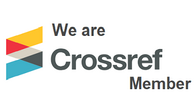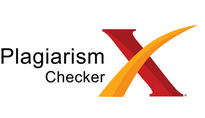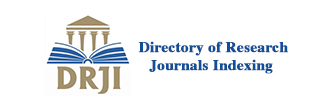Title:
MEMETAKAN PERILAKU ANAK DALAM MENGONSUMSI MEDIA SEBAGAI UPAYA PENGEMBANGAN PROGRAM “MAGELANG KOTA LAYAK ANAK”
Author:
Abstract
Keywords
Full Text:
PDFReferences
MagelangKota, (2021). “Kota Magelang Sandang Kategori Nindya Kota Layak Anak 2021”, dalam https://jatengprov.go.id/beritadaerah/kota-magelang-sandang-kategori-nindya-kota-layak-anak-2021/ diunduh pada 30 Desember 2021 pukul 13.36 WIB.
Rosalina, Lenny, dkk. (2011). Bahan Advokasi Kebijakan KLA. Jakarta: Kementrian Pemberdayaan Perempuan dan Perlindungan Anak Republik Indonesia.
APJII. (2016). “Laporan Riset: Statistik dan Consumer Behavior Pengguna Internet di Indonesia”. Disampaikan dalam Media Gathering Indonesia Internet Expo and Summit November 2016. Jakarta: APJII.
Tampubolon, Jessica Jane. (2013). “Dampak Negatif Media Massa Terhadap Kekerasan Seksual di Indonesia”. Skripsi. Jakarta: Universitas Indonesia.
Ureport. (2016). “Media: Taman Bermain Anak Masa Kini”, dalam https://indonesia.ureport.in/poll/1659/ diunduh pada November 2017 pukul 12.02 WIB.
Potter, W. James. (2008). Media Literacy. Thousand Oaks: Sage Publications.
Morissan (2013). Teori Komunikasi: Individu hingga Massa. Jakarta: Kencana Prenada Meda Group.
Baran, Stanley dan Davis, Dennis K. (2009). Mass Communication Theory. Boston, USA: Wadsworth Cengane Learning.
Lin, Tzu-Bin, dkk. (2013). “Understanding Media Literacy: An Explorative Theoritical Framework”. Journal Educational Technology and Society. Departement of Education National Taiwan Normal University. Vol. 16. N.4. Halaman 160-170.
Grizzle, Alton, dkk. (2013). Media and Information Literacy: Policy and Strategy Guidelines. UNESCO.
Singer, Dorothy G dan Jerome L. Singer. (2001). Handbook of Children and Media. Thousand Oaks: Sage Publications.
Singarimbun, Masri dan Sofian Effendi. (1995). Metode Peneltian Surbai. Jakarta: LP3ES.
Kriyantono, Rachmat. (2006). Teknik Praktis Riset Komunikasi. Jakarta: Kencana Prenada Group.
Lestari (2017). “Pola Konsumsi Masyarakat Bergeser ke Digital”. Kompas. Diunduh dalam https://www.kompas.tv/article/10997/bps:-pola-konsumsi-masyarakat-bergeser-ke-digital- pada 14 Juli 2019 pukul 10:50 WIB.
Griffin, Em (2010). A First Lokk at Communication Theory. USA: Mc Graw Hill Education
McQuail, Dennis (2010). Mass Communication Theory. London: Sage Publications.
McQuail, Dennis. (2011). “Teori Komunikasi Massa McQuail (Buku 1) (Edisi 6)”. Jakarta : Salembe Humanika.
Salam, Ahmad Mulyi (2016). “Pengaruh Sinetron Anak Jalanan Terhadap Perilaku Remaja”. Jurnal Lentera. Volume Xviii Nomor 2 Halaman 105-126.
Anna, Lusia Kus (2018). “80 Persen Konsumen Belanja Online Orang Muda dan Wanita”. Kompas Lifestyle. Diunduh dalam https://lifestyle.kompas.com/read/2018/03/22/155001820/80-persen-konsumen-belanja-online-orang-muda-dan-wanita?page=all pada 15 Juli 2019 pukul 15:50 WIB.
Martin, Allan. (2008). “Digital Literacy and the ‘Digital Society” dalam Lankshear, C and Knobel, M (ed). Digital literacies: concepts, policies and practices. Die Deutsche Bibliothek.
Utomo, Wisnu Prasetya (2012). “Rating Televisi Hanya Mengedepankan Kuntitas”. Kabar Remotivi. Diunduh dalam http://www.remotivi.or.id/kabar/215/Rating-TV-Hanya-Mengedepankan-Kuantitas pada 15 Juli 2019 pukul 17:01 WIB.
Herlina, Dyna, Benni Setiawan, dan Gilang Jiwana Dikara (2018). Digital Parenting: Mendidik Anak di Era Digital. Yogyakarta: Samudra Biru.
Jenkins, H. (2006). Confrontong the Callenges of Participatory Culture: Media Education for 21th Century. Chicago: The MacArthur Foundation.
DOI: https://doi.org/10.31002/jkkm.v6i1.5667
Article Metrics
Abstract view : 0 timesPDF - 0 times
Cited By
Refbacks
- There are currently no refbacks.
Copyright (c) 2022 Jurnal Komunikasi dan Kajian Media

This work is licensed under a Creative Commons Attribution-NonCommercial 4.0 International License.

This work is licensed under a Creative Commons Attribution-NonCommercial 4.0 International License. View My Stats

.jpg)






1.png)


.png)



 Abstract views : 0
|
Abstract views : 0
| PDF views : 0
PDF views : 0